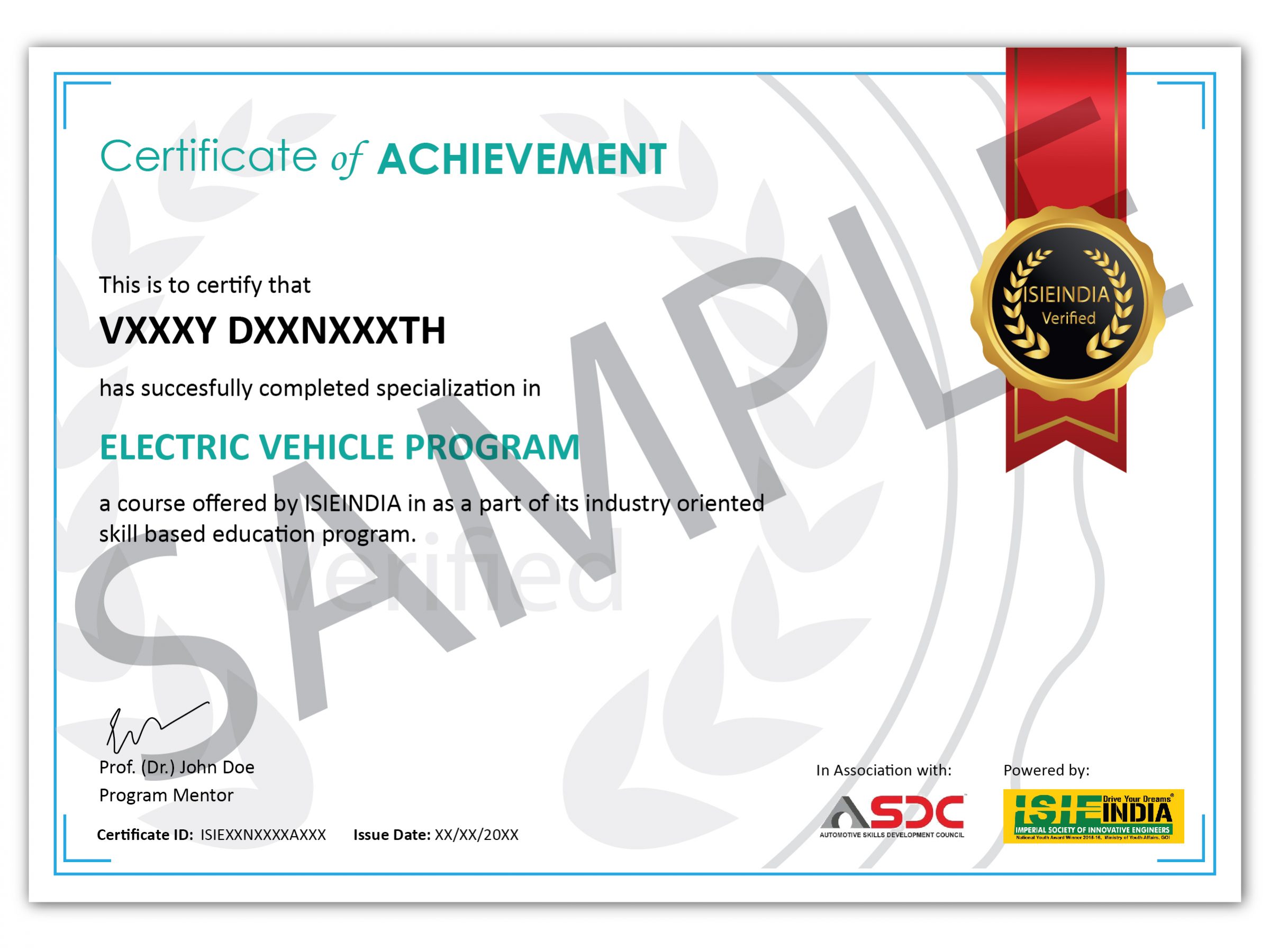Learn Intro to EVSE, Charging Methods, Charging Protocol, Charging Systems, EV Charging Station, Roadmap Challenges and Policy accompanied with various recent case studies to attain the challenges set by the EV industries with Personalized Industry Mentorship, Career Guidance, and Placement Assistance and much more.
Aerodynamics of Vehicle Design
- Description
- Curriculum
- Reviews

About the Program

Personalised Mentorship
Get mentored by an experienced EV Industry expert and receive personalised feedback calls for better career guidance.

Globally Valid Certificate
Get a Globally valid certificate and enter your workplace with confidence and assert yourself as a subject matter expert.

Student Support
Student support available 09 AM to 07 PM IST via email or call and get a response within 2 working hours.

Specialized Aerodynamics of Vehicle Design
Certified by ASDC
Complete all the courses successfully to obtain the certification from ASDC.
• Globally Recognized Certificate
• Recommended program by SMEV, MSME and 17 + Automotive Industries.

Case Studies
Ground Effect and Vehicle Design
The ground clearance of the vehicle plays a major role in the overall performance of the vehicle. Although most of the performance-oriented cars have low ground clearance in order to maintain low C.G., that also gives them a good advantage aerodynamically. Here we will be comparing the ground effect for the same vehicle design.
Drag Reduction
As the name suggests here we will be studying how the form and shape of the body define the drag coefficient. Understand the different ways in which the drug can be reduced. This will be majorly done by studying the evolution of design over years and how it has affected aerodynamics performance. We will be taking a brief look at some of the iconic designs.
Still Not sure?
Talk to our Expert Mentors
An Expert will reach out to you within 6 Hours
About Aerodynamics of Vehicle Design Program
Aerodynamics is one of the old areas of interest for many engineers and scientists. This subject has been studied for a very long time and a lot of literature is available. It is very difficult for a beginner to streamline his/her learning process as everything looks interesting.
Do you know, the wings on the F1 car, at the front and the rear are placed strategically to create downforce in order to prevent the car from flying. As the F1 cars have the power to weight ratio of approx 1200 hp per ton. The front wing alone has the ability to generate enough downforce to counter the weight of the rear and has been designed to withstand 400 kg of weight.
In this course on aerodynamics study of vehicles, we will be taking a look at the various interesting similar case studies and understand the concept of drag reduction. Answer questions like – How does the ground clearance affect the performance of the car in terms of aerodynamics, and how has Tesla built the most aerodynamic efficient electric vehicle?
This course will take you through the process of calculating aerodynamic drag and lift forces theoretically and also on the basis of the simulation, and make you understand the application of different equations for different environments.
Program Outcomes

You will have a clear understanding of CFD.

You will have a better understanding of Aero-dynamics and Drag Calculation.

You will learn the process to conduct CFD simulation.

You will be inspired to pursue CFD as a professional or academic field of your choice.

You will know the process to define a CFD problem.

You will learn how CFD results are used for making design decisions.

You will learn the process to conduct mesh generation for CFD .
ISIEINDIA Instructors
Learn from leading Industry oriented trainer, faculty and leaders
Our Expert Work At
Top companies from all around the world



ISIEINDIA Alumni
Where our Alumni Work
Payment Offers
Now, pay your course fees in installments at no cost EMI available at Credit cards following banks
-
1Introduction to CFD – What is CFD?
-
2Introduction to CFD - Why CFD?
-
3CFD Process
-
4CFD Pre Requisites
-
5Introduction to Fluid Dynamics – Basics of Flow
-
6Introduction to Fluid Dynamics – Basic Terminologies
-
7Introduction to Aerodynamics – Aerodynamics Equation
-
8Introduction to Aerodynamics – Area and Drag Coefficient
-
9Assessment



















